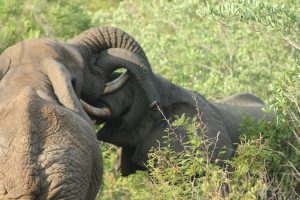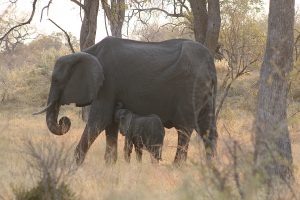This post is not about travel as such, but seeing that we had several close encounters with elephants in Mana Pools, Matusadona as well as in many of the Botswana wild parks this may come in handy. Even in lately in Kruger National Park there were some incidents/accidents.

Let’s start off with some interesting and lesser known facts about the trunk of an elephant:
Feeling the vibe: Aside from smell, the trunk is sensitive to vibrations; from the ground it can sense the rumble of faraway herds and even far-off thunder.
Mighty muscles: An elephant’s trunk has eight major muscles on either side and 150,000 muscle bundles in all. It is so strong that it can easily push down trees or roll over a vehicle.
Move it: Like the human tongue, the trunk is a muscular hydrostat – a boneless muscular structure that allows for its excellent maneuverability.
Phenomenal sense of smell: So sensitive is an elephant’s trunk that it is more capable than a bloodhound’s nose and is said to be able to smell water, citrus and apples from several miles away.

How to approach an elephant
-
- Slow down as soon as you see and/or approach the elephants.
-
- Assess the area for possible escape routes if necessary.
-
- Make sure you do not have any citrus with you as they will trample a vehicle to get to it.
-
- Take extra care if there are juveniles in the elephant group – keep your distance as the mothers can be extremely unpredictable with small ones around.
-
- If you are in an open safari vehicle, do not stand up or make sudden movements on the vehicle or speak loudly. Although their eyesight is not good an elephant might feel threatened and can cause an aggressive response.
- If an elephant shows threatening behaviour, slowly retreat and give it space.

Some of the most obvious threatening behavior displayed by elephants are
Spreading the ears: The elephant faces an opponent head-on with ears fully spread (at 90 degrees from the body). They also spread their ears when they are excited, surprised or alarmed.
Mock charging: The elephant rushes toward you while spreading its ears and just stops short of its target while kicking up dust. This will also be accompanied with trumpeting.
Bundu bashing: The elephant causes a commotion to demonstrate strength, tossing its head and tusks back and forth through bushes or other vegetation while making a noise.
Charging: The elephant rushes toward you with its ears spread and its head raised or lowered while it has the apparent intention of following through. Its trunk may be tightly curved under so that the tusks can make contact first. A real charge is usually silent and extremely dangerous. I think it is time to get away as soon as possible!
—oOo—
Did you know? That an elephant’s skeleton makes up 16.5% of its total weight in order to support its heavy mass?
—oOo—
Hope you enjoyed these facts. Also read about the bee and elephant project in Kenya. You can follow them on Facebook @ Elephants and Bees Project.
Be responsible and travel safely in the wild!
Love will draw an elephant through a key-hole —– Samuel Richardson
